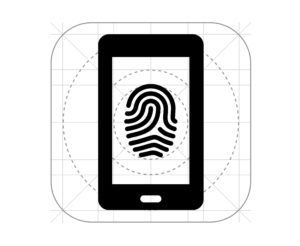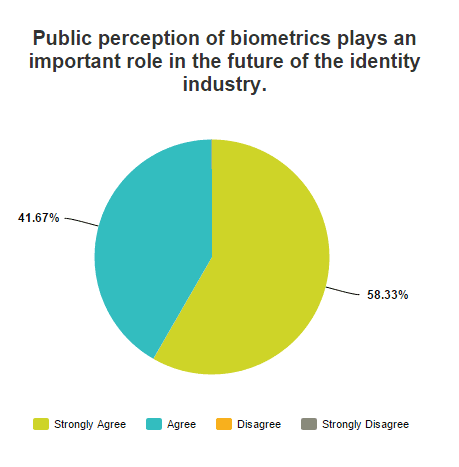 Last year was one of unprecedented visibility for biometric technology. With major innovations in mobility and consumer electronics bringing post-password tech to the masses, and with the increased international threat of terrorism once again spurring on the initiatives to biometrically secure borders, biometrics were among the mainstream topics of 2015.
Last year was one of unprecedented visibility for biometric technology. With major innovations in mobility and consumer electronics bringing post-password tech to the masses, and with the increased international threat of terrorism once again spurring on the initiatives to biometrically secure borders, biometrics were among the mainstream topics of 2015.
But with increased optics comes increased scrutiny. Public perception became a talking point in 2015 as privacy issues became more prominent and misconceptions continued to undermine the promise of next gen strong authentication.
We asked our Year in Review survey respondents if they agreed that public perception was crucial. Here’s what they had to say:
 The results of this survey question are unanimously in agreement, though a 58 percent majority are more emphatic in their support of the statement. Only one other question on our survey reached such a consensus (more on that next week).
The results of this survey question are unanimously in agreement, though a 58 percent majority are more emphatic in their support of the statement. Only one other question on our survey reached such a consensus (more on that next week).
Now, to a degree, all publicity is good publicity. The fact that biometric authentication and identification has become such a mainstream news topic is an indication that the industry has moved past its pilot and testing phases, and it’s actually seeing real life use cases. That said, there seems to be two major stumbling blocks facing the newly popular industry of identity when it comes to the general public’s view.
First, there are the public misconceptions that have stemmed from a combination of the technology being new and unfamiliar, a stigma born of entertainment media’s misrepresentation of the technology, and a general misunderstanding of the basic principles behind biometric authentication.
 Second, there is a conflict between private interests and privacy focused civil rights organizations. Last year this was most apparent in the highly publicized breakdown in negotiations between parties on either side of that equation, halting a group meant to build standards of the use of facial recognition in marketing scenarios. To the public, this sort of friction between civil rights parties and private interests screams controversy, inevitably building a negative pedestal for certain biometric modalities to sit on.
Second, there is a conflict between private interests and privacy focused civil rights organizations. Last year this was most apparent in the highly publicized breakdown in negotiations between parties on either side of that equation, halting a group meant to build standards of the use of facial recognition in marketing scenarios. To the public, this sort of friction between civil rights parties and private interests screams controversy, inevitably building a negative pedestal for certain biometric modalities to sit on.
The answer to this issue is linked two other topics in our 2015 Year in Review: the importance of education and the role of industry consortia. Essentially, under the increasingly bright spotlight of the public’s eye, it will become increasingly important for everyone to be on the same page, and that includes vendors, relying parties and consumers. The benefits of biometrics are far reaching and essential to the future of security, both online and offline. Adoption of the technologies that bring these benefits will rely on a public end-user base with a positive perception of strong authentication and identification—a population that is familiar with the myths and realities of biometrics, as well as an assurance that said technologies are being used in accordance with robust industry specifications.
*
Stick with FindBiometrics throughout January as we bring you more results from our 13th annual Year in Review. Be a part of the conversation by following us on Twitter and tweeting with the hashtag #FB2015.
—
January 21, 2016 – by Peter B. Counter



Follow Us